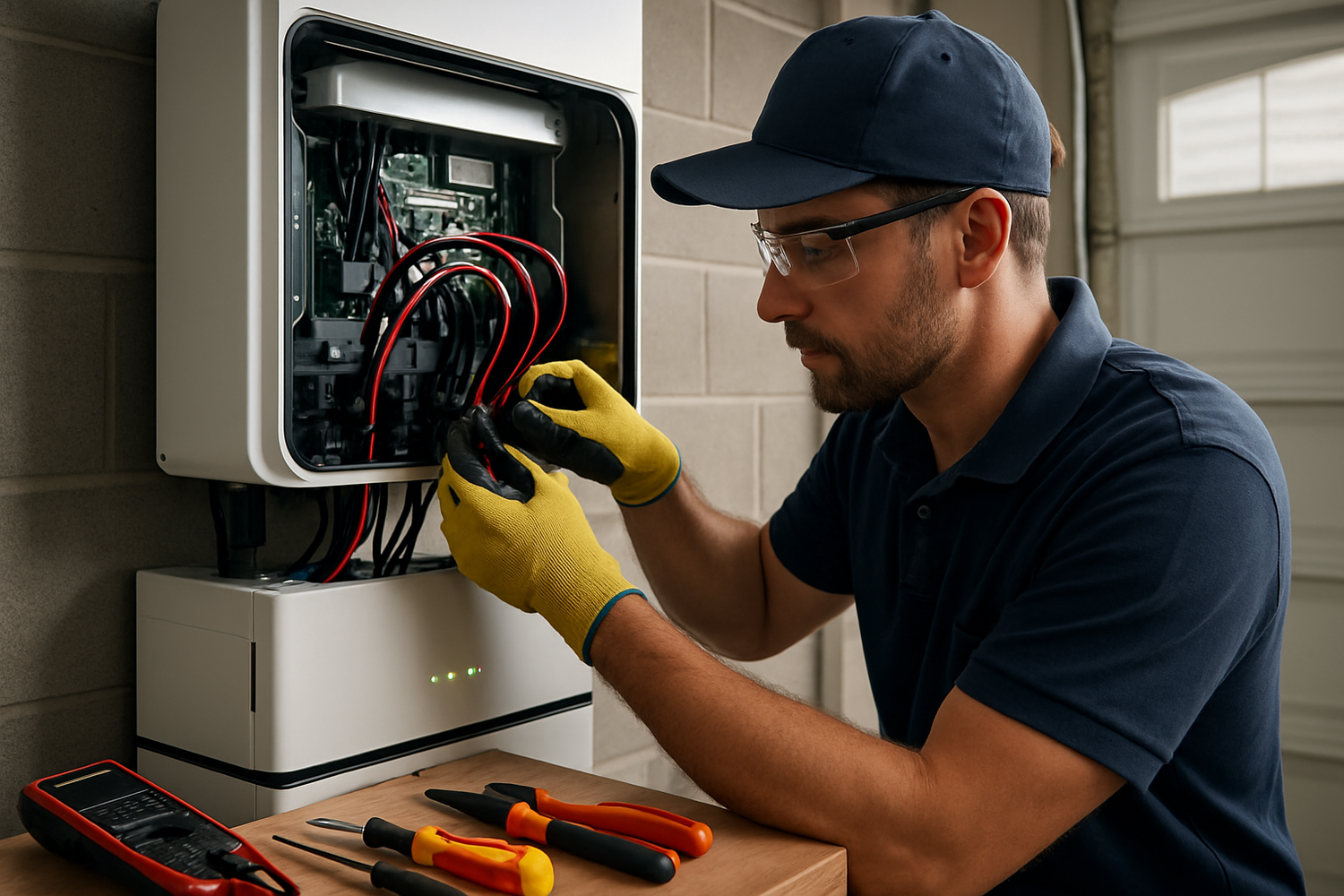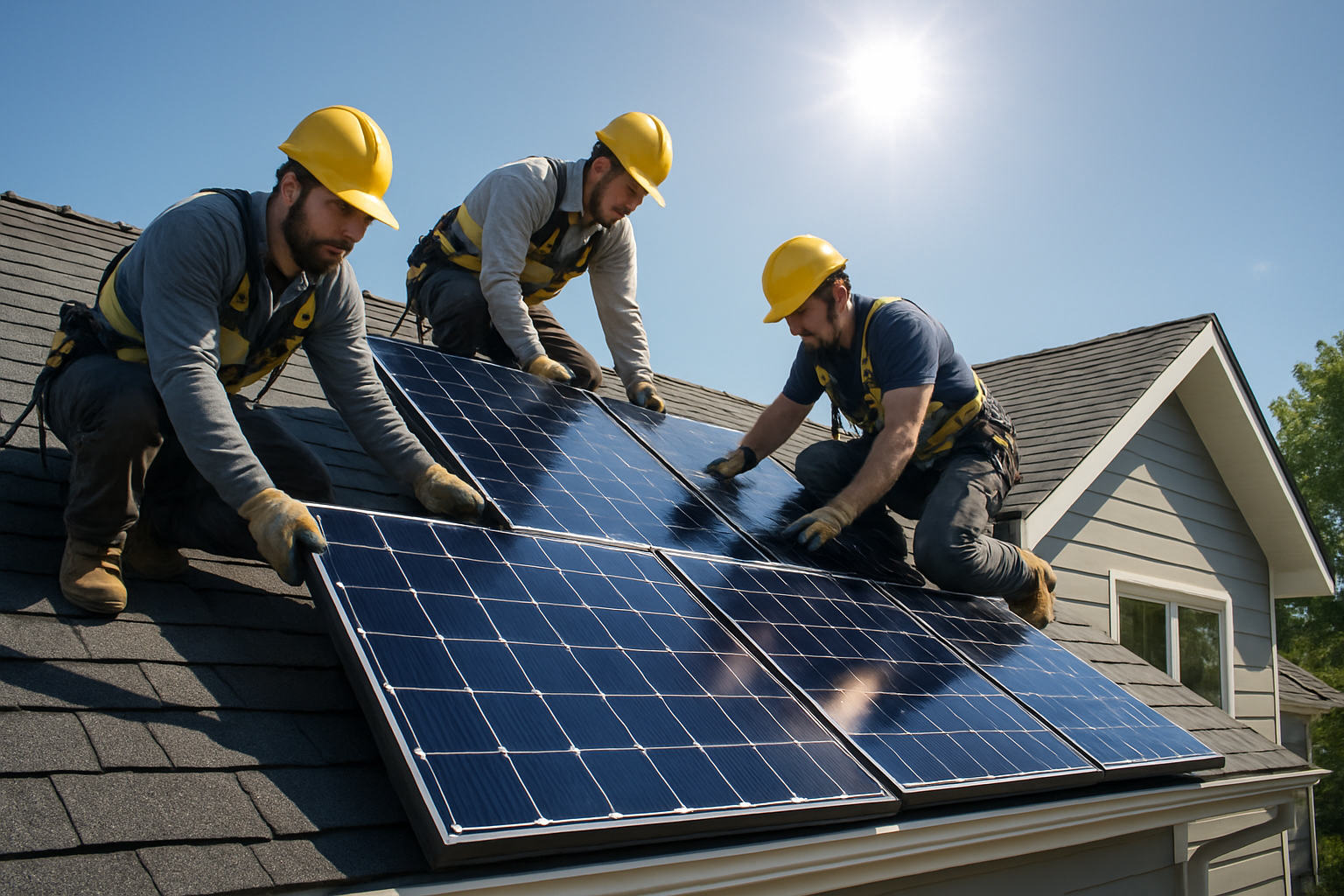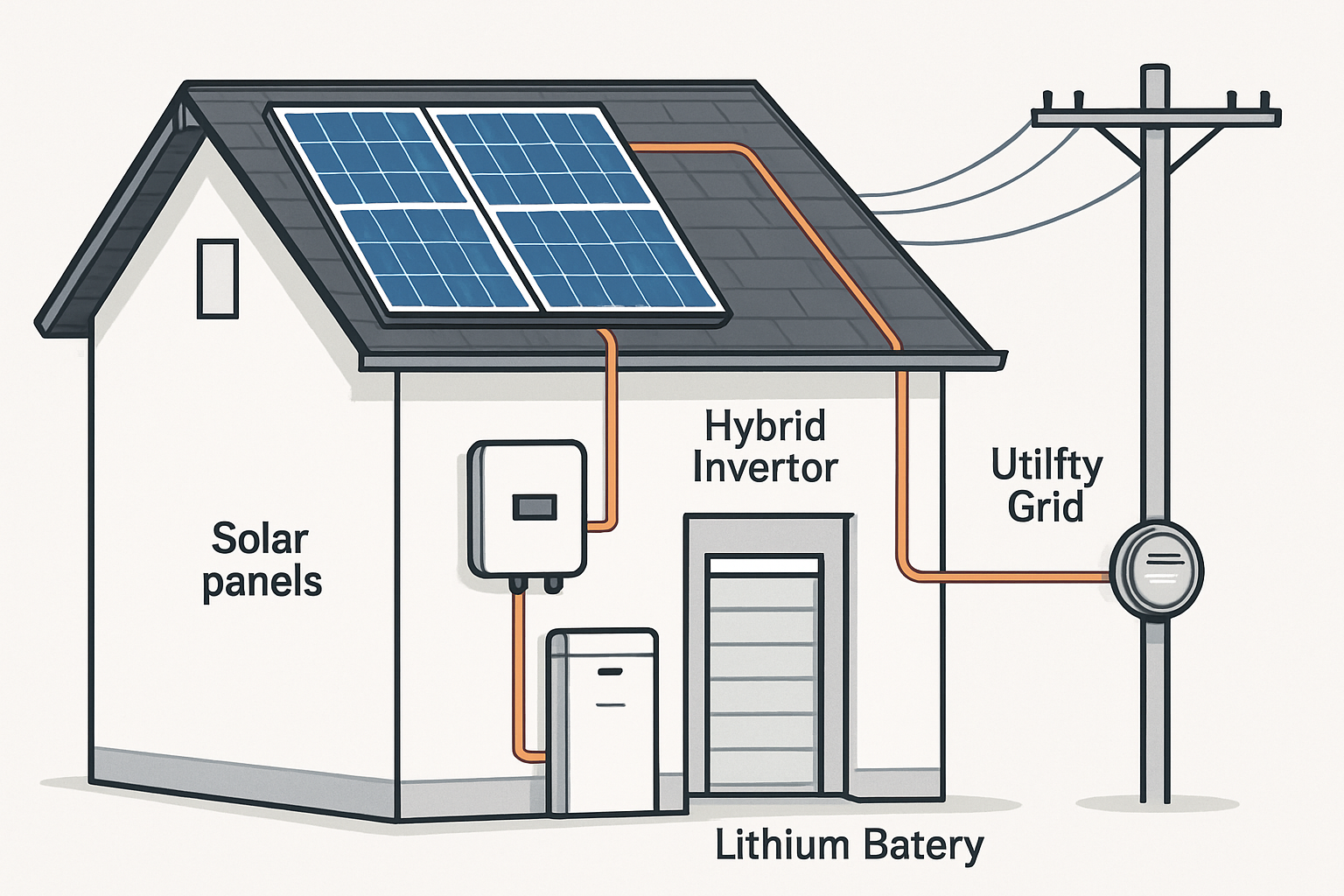Transitioning to solar energy is an exciting step towards energy independence. Yet, the long-term performance and safety of your system depend entirely on a correct installation. Even with the highest quality components, a flawed installation can lead to reduced power output, safety hazards, and costly repairs. Poor installation practices can cause a range of problems, from structural issues to electrical faults like power surges.
This guide details the most frequent installation pitfalls, from initial planning to final system checks. Understanding these errors helps you ensure your investment delivers optimal performance for decades. A system built on a solid foundation, using reliable components like high-performance LiFePO4 batteries and integrated energy storage systems (ESS), is a system you can count on.
Pre-Installation Planning and Design Flaws
The success of a solar installation is often determined before any equipment is unpacked. Thorough planning and design are critical to avoid problems that are difficult and expensive to fix later.
1.1 Inadequate Site Assessment
One of the most significant errors is an incomplete evaluation of the installation site. A proper assessment goes beyond simply checking for space. It involves a detailed analysis of the roof's orientation, tilt, and structural integrity. Even minor shading from trees, chimneys, or nearby buildings can drastically reduce energy production, as shading on just one part of a panel can affect the entire series. For a deeper look at the consequences, see our Case Study: Shading Misjudgments That Doomed a Rooftop PV.
1.2 Improper System Sizing
A frequent pitfall is incorrectly sizing the system to meet your energy needs. An undersized system will fail to cover your electricity demands, forcing you to rely on the grid and diminishing your savings. Conversely, an oversized system can lead to unnecessary upfront costs without proportional returns. This is particularly true for battery storage. Undersizing your battery capacity can leave you without sufficient power during an outage. Scalable solutions, such as an integrated ESS with robust LiFePO4 batteries, provide the flexibility to match your specific energy profile. Learn more in Stop Undersizing Batteries: ESS Design Mistakes to Avoid. It's a common misconception that simply adding more panels can compensate for poor planning; find out why in Myth vs Reality: Oversizing Panels Won't Fix Bad Siting.
1.3 Neglecting Local Regulations and Permitting
Every locality has specific building codes, electrical standards, and permitting requirements for solar installations. Ignoring these rules can lead to significant delays, fines, or even an order to remove the system. Obtaining the proper permissions from local authorities and the utility company is a critical precondition for any project. Navigating this administrative process is a key part of avoiding financial setbacks, as explained in How to Avoid Costly Solar Install Pitfalls and Protect ROI.
Physical Installation and Wiring Errors
During the physical installation, precision is paramount. Small mistakes in mounting, wiring, or safety connections can have serious consequences for system performance and safety.

2.1 Poor Mounting and Racking Practices
Solar panels must be securely mounted to withstand weather conditions for over 25 years. Improperly attached racking can damage the roof, leading to water leaks and compromising the building's structural integrity. It is essential to use mounting hardware appropriate for the specific roof type and to ensure all penetrations are properly sealed and flashed. Additionally, installing panels on an old or weak roof without reinforcing it is a critical error.
2.2 Critical Wiring and Connection Errors
Faulty wiring is one of the most dangerous installation mistakes. Loose connections, mismatched connectors, or using an incorrect wire gauge can lead to power loss, system shutdowns, and pose a significant fire risk from arc faults. A high-quality solar inverter is central to managing the system's electricity, but it cannot compensate for poor wiring. For detailed examples of what can go wrong, explore 9 Wiring and Inverter Errors That Kill System Efficiency. The type of inverter technology used also presents unique challenges, which you can learn about in Microinverters vs String Inverters: Installation Error Traps.
2.3 Inadequate Grounding and Safety Measures
Proper grounding is a non-negotiable safety requirement for any electrical system. It protects your equipment and home from damage caused by lightning strikes or electrical faults. Failing to correctly ground the system or omitting necessary surge protection exposes the entire investment to risk. This foundational safety step is covered in detail in our guide: Are You Grounding and Surge-Protecting Your PV Correctly?.
System Commissioning and Post-Installation Oversights
The installation process doesn't end when the last panel is secured. Proper system commissioning and client education are vital for long-term success.
3.1 Rushing the Commissioning Process
Commissioning is the final quality check before the system goes live. This process involves more than just turning on the inverter. It requires a step-by-step verification of all electrical connections, voltage tests, and configuration of the inverter and battery management system (BMS). Rushing this stage can mean missing subtle faults that develop into major problems later. To understand the importance of getting the first month right, read First 30 Days: Commissioning Mistakes and Maintenance Blueprint.
3.2 Lack of Proper System Monitoring Setup
Modern solar and storage systems provide powerful monitoring tools to track energy production and consumption. Failing to properly configure and explain this monitoring to the homeowner is a missed opportunity. Without it, performance issues may go unnoticed for months, silently increasing electricity bills. An integrated ESS provides seamless monitoring, giving you clear insight into your system's health and performance.
3.3 Insufficient Homeowner Education
A successful handover includes educating the homeowner on how their new system operates. This includes understanding normal system behavior, interpreting inverter status lights or app notifications, and knowing basic troubleshooting steps. An informed owner is better equipped to identify potential issues early. For new system owners, our resource New to Solar? 12 Common Install Mistakes, Questions Answered is a great starting point.
The Role of Skilled Professionals and Quality Components
The International Energy Agency (IEA) highlights that skilled labor is essential to guarantee the successful installation of equipment, thereby avoiding hardware failures and cost overruns. Choosing a certified, experienced installer is one of the most effective ways to prevent the mistakes outlined above. Equally important is the selection of high-quality components designed for reliability and safety.
Our focus on developing reliable and scalable energy solutions addresses these challenges directly.
- High-Performance LiFePO4 Batteries: Known for their safety and long cycle life, these batteries form a dependable core for any energy storage system.
- Integrated Home Energy Storage Systems: By combining the lithium battery, hybrid inverter, and other critical components into a single unit, our ESS solutions simplify installation and reduce the risk of compatibility errors.
- Robust Off-Grid Solutions: For applications where reliability is paramount, our off-grid systems are engineered to provide consistent power, built on a foundation of proper design and durable components.
| Common Installation Pitfall | Risk of Poor Installation | Benefit of Professional Installation & Quality Components |
|---|---|---|
| System Sizing | Energy shortfalls or wasted investment. | System perfectly matched to energy needs, maximizing ROI. |
| Wiring & Connections | Power loss, equipment damage, fire hazard. | Safe, efficient, and code-compliant electrical work. |
| Component Quality | Premature failure of inverters or batteries. | Long-term reliability and performance backed by strong warranties. |
| Commissioning | Undetected faults leading to future downtime. | Verified performance and safety from day one. |
Moving Forward: Ensuring a Successful Installation
Achieving energy independence is a significant goal, and it begins with a flawless installation. By understanding common installation mistakes, you can ask informed questions and ensure your project is set up for success from the start. A correct installation not only protects your investment but also ensures your system operates safely and efficiently for its entire lifespan. The combination of a skilled installer and reliable, well-engineered components provides the best path to a dependable and lasting energy solution.
Disclaimer: This article is for informational purposes only and does not constitute professional installation or financial advice. Always consult with a qualified and certified professional for any solar and energy storage system installation.





Leave a comment
All comments are moderated before being published.
This site is protected by hCaptcha and the hCaptcha Privacy Policy and Terms of Service apply.